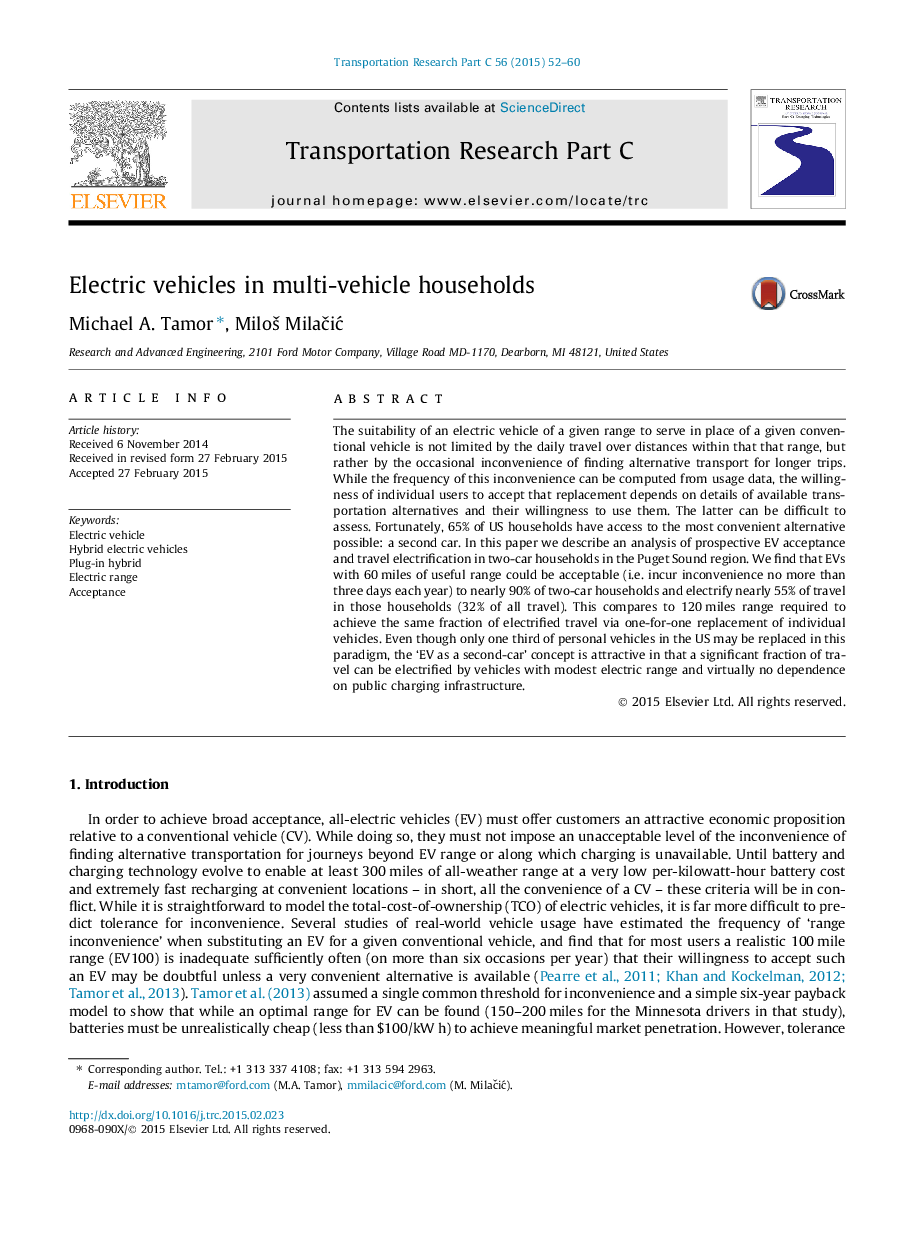| Article ID | Journal | Published Year | Pages | File Type |
|---|---|---|---|---|
| 6936698 | Transportation Research Part C: Emerging Technologies | 2015 | 9 Pages |
Abstract
The suitability of an electric vehicle of a given range to serve in place of a given conventional vehicle is not limited by the daily travel over distances within that that range, but rather by the occasional inconvenience of finding alternative transport for longer trips. While the frequency of this inconvenience can be computed from usage data, the willingness of individual users to accept that replacement depends on details of available transportation alternatives and their willingness to use them. The latter can be difficult to assess. Fortunately, 65% of US households have access to the most convenient alternative possible: a second car. In this paper we describe an analysis of prospective EV acceptance and travel electrification in two-car households in the Puget Sound region. We find that EVs with 60Â miles of useful range could be acceptable (i.e. incur inconvenience no more than three days each year) to nearly 90% of two-car households and electrify nearly 55% of travel in those households (32% of all travel). This compares to 120Â miles range required to achieve the same fraction of electrified travel via one-for-one replacement of individual vehicles. Even though only one third of personal vehicles in the US may be replaced in this paradigm, the 'EV as a second-car' concept is attractive in that a significant fraction of travel can be electrified by vehicles with modest electric range and virtually no dependence on public charging infrastructure.
Related Topics
Physical Sciences and Engineering
Computer Science
Computer Science Applications
Authors
Michael A. Tamor, MiloÅ¡ MilaÄiÄ,
